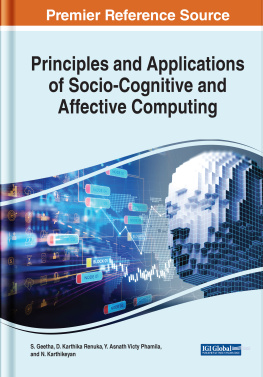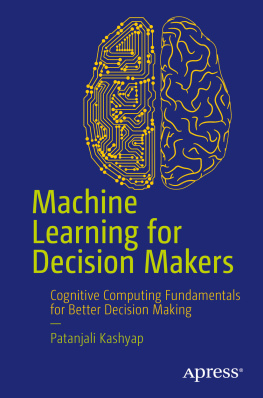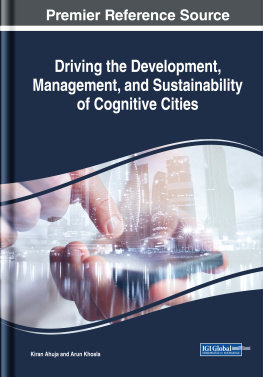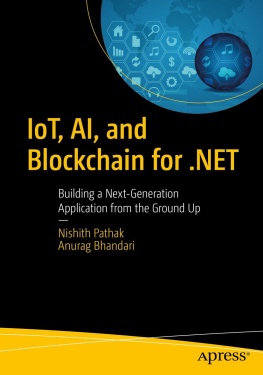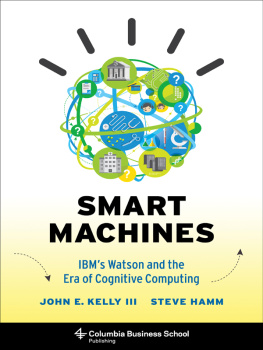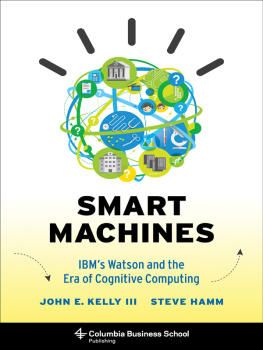EAI/Springer Innovations in Communication and Computing
Series Editor
Imrich Chlamtac
European Alliance for Innovation, Ghent, Belgium
Editors Note
The impact of information technologies is creating a new world yet not fully understood. The extent and speed of economic, life style and social changes already perceived in everyday life is hard to estimate without understanding the technological driving forces behind it. This series presents contributed volumes featuring the latest research and development in the various information engineering technologies that play a key role in this process.
The range of topics, focusing primarily on communications and computing engineering include, but are not limited to, wireless networks; mobile communication; design and learning; gaming; interaction; e-health and pervasive healthcare; energy management; smart grids; internet of things; cognitive radio networks; computation; cloud computing; ubiquitous connectivity, and in mode general smart living, smart cities, Internet of Things and more. The series publishes a combination of expanded papers selected from hosted and sponsored European Alliance for Innovation (EAI) conferences that present cutting edge, global research as well as provide new perspectives on traditional related engineering fields. This content, complemented with open calls for contribution of book titles and individual chapters, together maintain Springers and EAIs high standards of academic excellence. The audience for the books consists of researchers, industry professionals, advanced level students as well as practitioners in related fields of activity include information and communication specialists, security experts, economists, urban planners, doctors, and in general representatives in all those walks of life affected ad contributing to the information revolution.
Indexing: This series is indexed in Scopus, Ei Compendex, and zbMATH.
About EAI
EAI is a grassroots member organization initiated through cooperation between businesses, public, private and government organizations to address the global challenges of Europes future competitiveness and link the European Research community with its counterparts around the globe. EAI reaches out to hundreds of thousands of individual subscribers on all continents and collaborates with an institutional member base including Fortune 500 companies, government organizations, and educational institutions, provide a free research and innovation platform.
Through its open free membership model EAI promotes a new research and innovation culture based on collaboration, connectivity and recognition of excellence by community.
More information about this series at http://www.springer.com/series/15427
Editors
Sasmita Rani Samanta , Pradeep Kumar Mallick , Prasant Kumar Pattnaik , Jnyana Ranjan Mohanty and Zdzislaw Polkowski
Cognitive Computing for Risk Management
1st ed. 2022

Logo of the publisher

Logo of the publisher
Editors
Sasmita Rani Samanta
Professor of Management, Pro-Vice Chancellor, Kalinga Institute of Industrial Technology (KIIT), Bhubaneswar, Odisha, India
Pradeep Kumar Mallick
School of Computer Engineering, Kalinga Institute of Industrial Technology, Bhubaneswar, Odisha, India
Prasant Kumar Pattnaik
School of Computer Engineering, Kalinga Institute of Industrial Technology, Bhubaneswar, Odisha, India
Jnyana Ranjan Mohanty
School of Computer Applications, Kalinga Institute of Industrial Technology, Bhubaneswar, Odisha, India
Zdzislaw Polkowski
Department of Business Intelligence in Management, Wroclaw University of Economics and Business, Polkowice, Poland
ISSN 2522-8595 e-ISSN 2522-8609
EAI/Springer Innovations in Communication and Computing
ISBN 978-3-030-74516-5 e-ISBN 978-3-030-74517-2
https://doi.org/10.1007/978-3-030-74517-2
Springer Nature Switzerland AG 2022
This work is subject to copyright. All rights are reserved by the Publisher, whether the whole or part of the material is concerned, specifically the rights of translation, reprinting, reuse of illustrations, recitation, broadcasting, reproduction on microfilms or in any other physical way, and transmission or information storage and retrieval, electronic adaptation, computer software, or by similar or dissimilar methodology now known or hereafter developed.
The use of general descriptive names, registered names, trademarks, service marks, etc. in this publication does not imply, even in the absence of a specific statement, that such names are exempt from the relevant protective laws and regulations and therefore free for general use.
The publisher, the authors and the editors are safe to assume that the advice and information in this book are believed to be true and accurate at the date of publication. Neither the publisher nor the authors or the editors give a warranty, expressed or implied, with respect to the material contained herein or for any errors or omissions that may have been made. The publisher remains neutral with regard to jurisdictional claims in published maps and institutional affiliations.
This Springer imprint is published by the registered company Springer Nature Switzerland AG
The registered company address is: Gewerbestrasse 11, 6330 Cham, Switzerland
Preface
This edited book aims to bring together leading researchers, academic scientists, and research scholars to put forward and share their experiences and research results on all aspects of cognitive computing and risk management. It also provides a premier interdisciplinary platform for educators, practitioners, and researchers to present and discuss the most recent innovations, trends, and concerns as well as practical challenges encountered and solutions adopted in the field of cognitive computing. The book is organized into ten chapters,
Chapter deals with review research that tries to assess the broad direction in entrepreneurship cognition context, analyzes various themes from the published articles, and critically analyzes the course.
Chapter focuses on exploring the relationship between select cognitive distortions and stress in a college setting. Partly modified scales of cognitive distortions (Roberts, M. B) and emotional stress (depression anxiety stress scales (DASS) have been used for the survey). Results indicate that there is a moderate correlation between the cognitive distortions and emotional stress. Results may be useful to mitigate the negative consequences of emotional stress born of cognitive distortions. It is implied that teachers recognize the suffering of general students in this respect and must adopt useful techniques to help the students.
Chapter deals with the objective of the study, which is to find the influence of cognitive barriers on drug adherence. Three cognitive barriers, viz., denial, refusal, and mistrust, have been taken in the study, and their effect on the drug adherence of diabetic patients have been studied.


